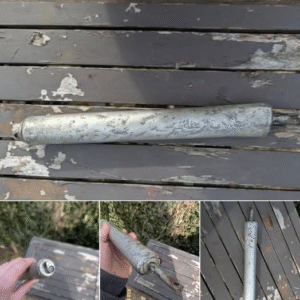Chicago Declares “ICE-Free Zones” Amid Rising Violence
Chicago Mayor Brandon Johnson recently announced designated “ICE-free zones,” declaring the city a sanctuary for migrant families. Standing behind a podium with the city seal, Johnson said federal immigration agents, especially ICE officers, should keep their distance. Cameras flashed, aides smiled, and Johnson hailed the decision as a symbol of dignity and protection for migrants.
But legally and constitutionally, Johnson has no authority to exempt Chicago from federal immigration law. No city can override federal enforcement.
Symbolic Gesture, Real-World Consequences
To progressive supporters, Johnson’s move appeared heroic — a stand against federal overreach. Yet residents face a different reality. Chicago is in the grip of persistent violence. Over the last weekend alone, at least 30 people were shot, five fatally. Victims ranged from 16 to 62 years old, most of whom will not make national headlines.
While Johnson staged his photo op, the city’s crime epidemic continues unabated, a grim reminder that political symbolism cannot replace effective governance.
Weekend Violence in Numbers
Chicago Police confirmed:
-
Five deaths and 24 injuries in weekend shootings.
-
The first shooting occurred Friday at 7:45 p.m. on West 85th Street, leaving one man dead and another severely wounded.
-
By Saturday, shootings scattered across neighborhoods like a checkerboard, continuing into Sunday and early Monday.
These incidents occurred in a city already known for “gun-free zones” — now adding “ICE-free zones” to its list of symbolic protections.
Mayor Johnson’s Mixed Messaging
Johnson’s stance on law enforcement has been contradictory. In September, he called police “a sickness” and said their presence is “an outdated model.” Yet, following a Labor Day weekend with nearly 60 shooting victims, he praised officers for seizing over 24,000 illegal guns.
This raises a question: Are police “a sickness” or “heroes” when statistics fit his narrative? The answer seems to depend on the audience.
Shifting Blame
When addressing progressives, Johnson blames former President Trump for Chicago’s crime. If that fails, he blames Indiana’s gun laws. When that narrative falters, he cites “systemic inequities.”
Data tells a different story: Most guns used in Chicago crimes originate within Illinois. The real problem lies in the city’s own leadership — decades of corruption, lenient prosecutions, and judges releasing violent offenders back onto the streets.
ICE-Free Zones: Shielding Criminals?
By restricting ICE operations in certain neighborhoods, Johnson’s “ICE-free zones” could unintentionally protect illegal immigrants with criminal histories. While law-abiding residents endure gun violence and robberies, individuals who break the law may find safe refuge, undermining public safety.
Sanctuary policies are not new. Previous mayors, including Lori Lightfoot and Rahm Emanuel, limited cooperation with ICE. Johnson’s approach explicitly forbids federal agents from operating in designated zones, but it does not change federal authority.
The Human Cost
Communities most affected by crime — low-income, minority neighborhoods — do not request “ICE-free zones.” They demand safety, stability, and protection. Families live in constant fear, children grow up numb to violence, and yet political gestures dominate headlines while real change lags.
Chicago was once a thriving, industrious city. Factories, commerce, and civic pride defined its neighborhoods. Decades of soft-on-crime policies and one-party dominance have eroded that foundation. Under Johnson, ideology often outweighs reality.
Political Calculus Over Public Duty
Declaring “ICE-free zones” serves political symbolism rather than practical policy. Progressive politicians often prioritize signaling to activist bases, nonprofits, and donors over tangible solutions. Every defiance of federal law increases standing with supporters, even as residents endure weekend tragedies.
Federal Reality
Federal authorities remain unaffected by Johnson’s declarations. ICE officers operate under federal law, not city proclamations. The Trump administration has warned that cities obstructing federal operations could face funding consequences — a promise, not a threat.
Media and Public Perception
National media framed Johnson’s “ICE-free zones” as compassionate, yet few questioned the practical implications. What happens when a dangerous, undocumented offender hides in a sanctuary area and harms someone? Responsibility remains unclear.
Moral and Civic Collapse
Johnson’s policies reveal a troubling pattern: When leaders prioritize ideology over law enforcement, ordinary citizens suffer. Villains are emboldened, law-abiding residents bear the cost, and public trust erodes.
Chicago’s sanctuary policies and anti-law enforcement rhetoric illustrate what happens when moral theater replaces moral courage.
Conclusion: Leadership or Abdication?
Declaring “ICE-free zones” amid rising violence is not leadership — it is abdication. Chicagoans deserve safety, order, and protection. Political gestures cannot replace effective governance.
Brandon Johnson’s policies reflect a city in crisis: one where ideology overshadows reality, law enforcement is vilified, and citizens pay the price.





